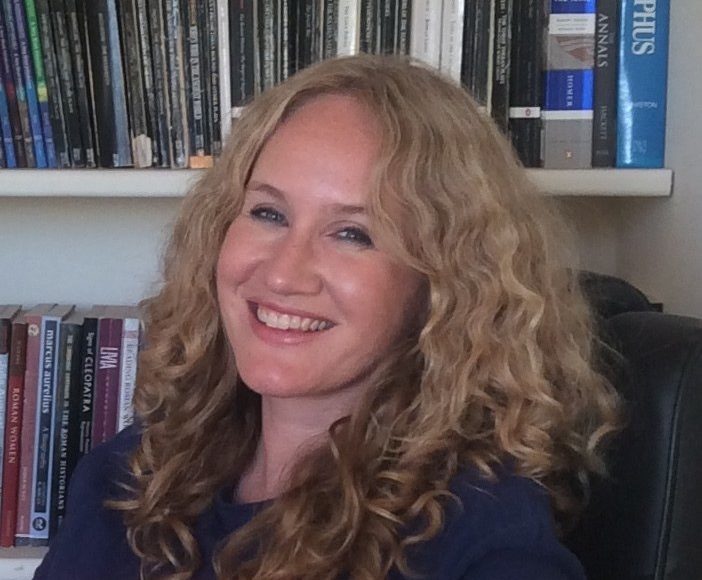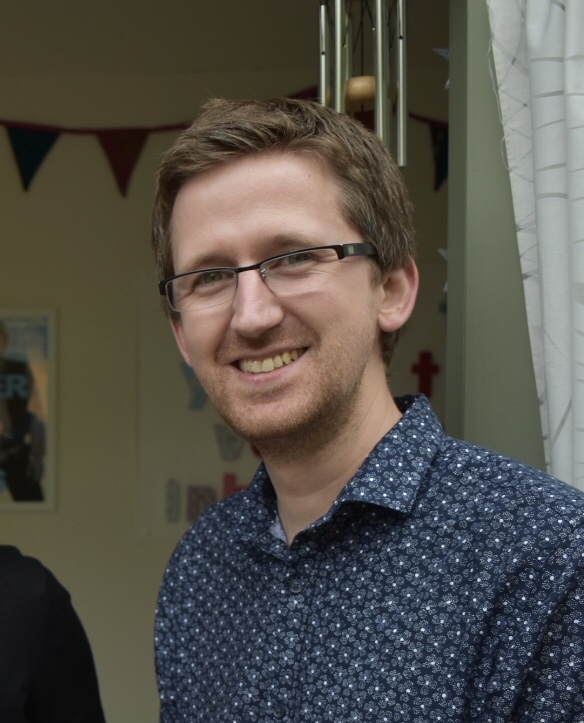Your cart is currently empty!

Annelise
Gray
I feel passionately that gender stereotypes are harmful and limiting for children and nothing gives me a bigger kick than to see them being confounded. It’s something I try to underline whenever I get the opportunity.
Annelise Gray

This is a rip-roaring historical adventure full of action and intrigue. A brilliant children’s book debut from Annelise Gray and the first in an exciting new series. Dido dreams of becoming the first female charioteer to race in the Circus, the greatest sporting stadium in the ancient world, but only the best can compete in this deadly race. This fabulous, fast-paced and gripping book is a sure-fire hit.
I’d like to thank Annelise Gray for joining us in the VIP Reading blog to talk about her latest book, Circus Maximus: Race to the Death.
Firstly, congratulations on Circus Maximus: Race to the Death, which we anticipate to be very popular. Can you tell us a little bit about the story without giving too much away?
Firstly, thank you so much for the lovely welcome.
Circus Maximus: Race to the Death is the story of a 12 year old girl called Dido who dreams of becoming a charioteer at the Circus Maximus, the greatest sporting stadium in the ancient world. But being a girl, she’s not allowed to compete. Her only consolation lies in helping her father Antonius, who’s the head trainer of the Green faction, one of the top racing teams. She has also befriended a tempestuous black stallion called Porcellus who no one at the stables can manage except for her. One tragic night, Dido’s world turns upside down when she sees something she’s not supposed to see at the Green stable, putting her life in danger. She is forced to go on the run, leaving behind everything she loves, in order to escape the men who would silence her. But she doesn’t give up on her dream, and the book follows her quest to become a charioteer, against the odds, while staying one step ahead of the men trying to hunt her down.
Are you able to tell us where the inspiration for the story come from?
There were two main sources of inspiration. The first came from the horse and pony adventures stories I loved when I was a kid. I was obsessed with one in particular, Enid Bagnold’s National Velvet, which is about a girl called Velvet Brown who wins a horse in a raffle and dreams of riding him to victory at the Grand National. I grew up to be a huge armchair fan of sport in general and it was while watching a Formula One race on TV one day that the second spark for the story was kindled. I was wondering rather wistfully whether one day there might be a female equivalent of Lewis Hamilton for me to cheer on, when suddenly my main character, Dido, popped into my head. I started imagining a brave, scrappy girl, a bit like Velvet Brown but living in ancient Rome and hoping to race to break into the all-male world of chariot racing. That’s how the book was born.
There is a wealth of historical detail within the book which adds a real authenticity to the story. How long did the research process take and the story as a whole?
I did quite a bit of research before I actually started writing. Although I have a doctorate in Classics, I knew next to nothing about the sport of chariot-racing, and I spent a quite a few months in London libraries building up a bank of research notes to draw upon so that I could paint as accurate a picture of possible of what went on at the Circus Maximus. After that, I tried to write through the first draft without stopping too much to check on things. Then I did another research stint during the editing process to help me paint in more of the sorts of period detail that would make you feel like you were part of Dido’s world – the everyday sights, smells, sounds and tastes of ancient Rome.
As to how long the book took to write, the answer to that could be anything between five years and about eighteen months, depending on your perspective! I have a file on my computer from 2015 which contains the first draft of the first couple of chapters of the book. But after that I took on a senior management role at the school where I teach and little writing got done for the next couple of years. Dido kept calling to me though and in the end I decided I needed to ditch the senior management job and finish the thing I cared about the most.
Both your previous books had a Roman theme, though they were for the adult audience. Where does your fascination with this period in history originate from?
I knew next to nothing about the Romans (other than their myths) until I was thirteen. Then I was given the chance to study Latin at school. Our textbook was all about a family living in Pompeii in the months leading up to the eruption of Mount Vesuvius. I remember so vividly being on tenterhooks in the last chapter, waiting to find out which of the characters would make it out alive. I think that experience was instrumental in making me see that the study of the Romans was actually the study of real people who once lived and breathed and felt things just as you or I might. I was also lucky to have been inspired by some brilliant teachers, both at school and later at university.
Can you tell us more about your inspiration for the character of Dido, the protagonist who has been dealt more than her fair share of tragedies?
I have always loved books about brave, rebellious girls. Dido’s closest literary cousin is probably Velvet Brown but her characterisation has also inevitably been influenced by the female characters from the books and films that made a big impression on me as a child (and indeed as a grown-up). These include Anne Shirley from the Anne of Green Gables series, Jo March from Little Women and Lyra Silvertongue from His Dark Materials.
The descriptions within the story are incredibly vivid and atmospheric. What roles or experiences have you had prior to writing Circus Maximus, that helped to shape the book?
I wish I could say that I’d drawn on my experience of racing chariots, but to be honest, I’m extremely risk averse and moving at speed intimidates me. However I get incredibly invested in the drama and high stakes of watching sport on TV – which I think helped with a lot of the action scenes in the book. I’m also intensely competitive in my own way, and I’ve always got a huge kick out of books or films that celebrate the underdog, which is the role Dido is forced into. The other experience that helped me was the years I spent riding horses when I was young. I’ve barely sat on one since, but I’m still endlessly fascinated by them. I’d love to have Dido’s skill as a horse whisperer.
As your debut in children’s fiction, how did this feel and compare to writing for adults?
It’s been a joyful experience. To be honest, in some ways it feels like I’ve shed a skin. I’m very proud of the two books I wrote for adults (one non-fiction and one fiction) but I always felt quite uncomfortable in the guise of grown-up Classical ‘expert’. As soon as I started writing Circus Maximus: Race to the Death, I knew that I had found my authentic voice as an author. I still love the historical research but it just feels now as though I’m writing simply and truly from the heart, trying to craft the kind of story that I might have loved as a child.
The issue of gender stereotypes and equality are themes featured in the story, as Dido has to constantly fight to have the same opportunities as the boys around her. How important was this theme to you and do you think it was possible there could have been a real Dido?
It’s a very important issue to me. The senior management role I spoke of earlier (the one that almost stopped me writing the book) was essentially being a kind of gender equality czar at the school where I work. I feel passionately that gender stereotypes are harmful and limiting for children and nothing gives me a bigger kick than to see them being confounded. It’s something I try to underline whenever I get the opportunity.
Could there have been a real Dido? Historical sources would tell you no and I don’t have any grounds to contradict them. But who knows….history is full of women who have found ways to live their lives against societal expectation, leaving their peers none the wiser.
Many people, myself included, will be wanting to know more about the next instalment. What can you tell us about Circus Maximus 2, which is coming out in 2022?
I have just handed in the first draft to my editor so I probably can’t say very much. All I can reveal is that many of the characters from book 1 return, and some new ones are introduced. I planted a little seed in book 1 that gives you a big clue as to the plot and theme of book 2 – you’ll have to see if you can spot it.
Finally, can you describe Circus Maximus: Race to the Death in three words?
(Can I borrow some indefinite articles?)
A girl. A horse. A dream…
Thank you so much for taking the time to read and answer our questions.
My pleasure! Thank you so much for asking me.

Q & A hosted by
Rob McCann
(Review by Kevin Cobane)